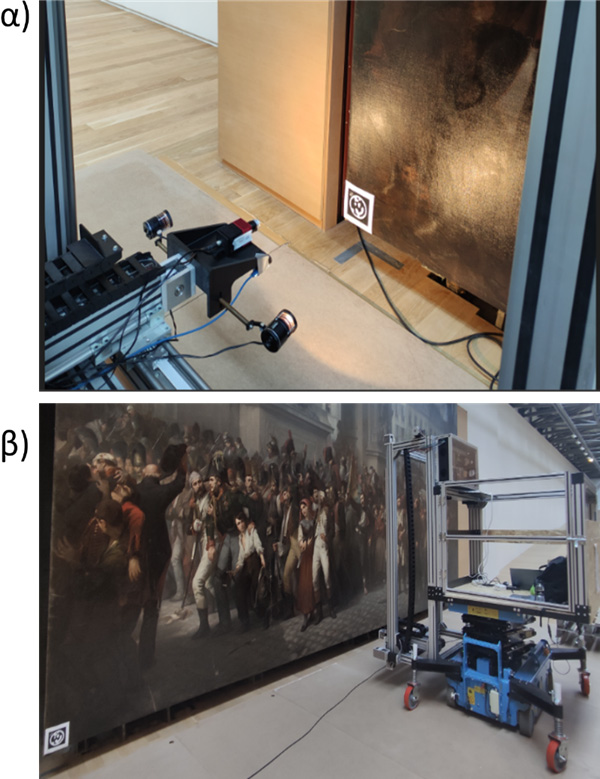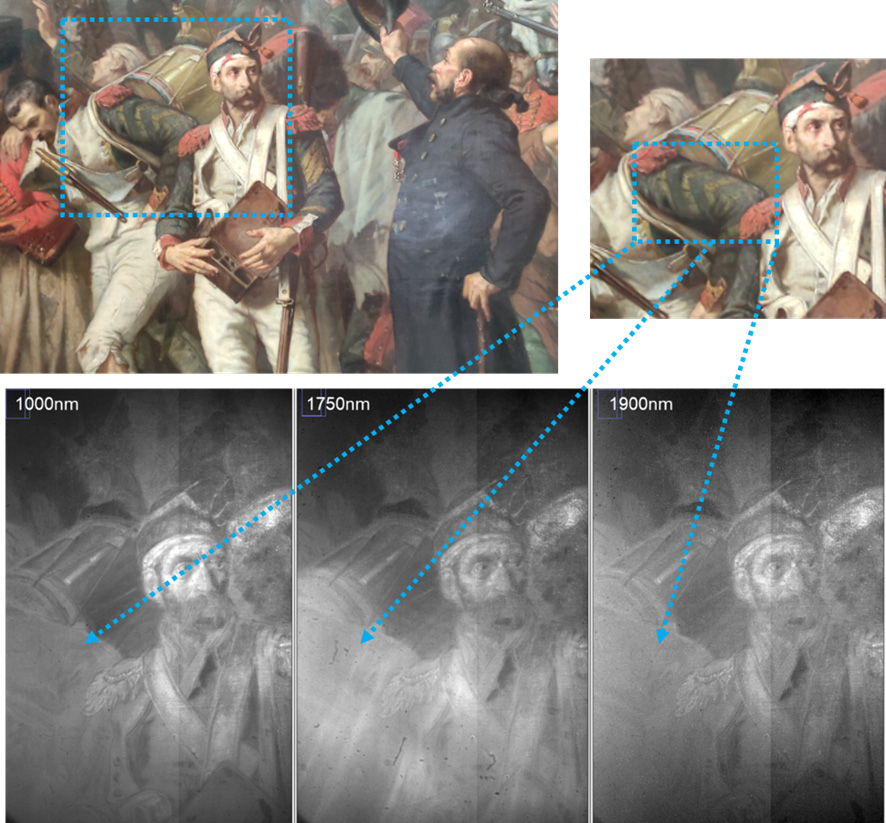The study was carried out in selected areas of particular interest according to the instructions of the conservators of EPMAS (figure 1) and while the work was now displayed in the exhibition space of the Gallery.

Figure 2 shows the results from a study area with two military men as central characters, one of whom can be seen carrying a drum on his back. On the shoulders of this military man some insignia can be observed which probably reveal his rank. Infrared reflectography study reveals that these insignia are not present in the artist’s sketch of the soldier carrying the drum. This probably indicates that it was not his original intention to paint these insignia which may have been created during the completion of the painting.

Figure 3 shows a typical embrace scene between a soldier and a girl. Behind these two, a head of a third person is just visible. Infrared reflectography reveals that the outline of this head also extends below the girl’s head, indicating that the painter probably drew this entire head first and then, above it, drew the heads of the two protagonists in the scene. It is not possible to determine whether the outline of the head also extends below the soldier’s head as the white of his handkerchief, which is most likely lead white, is highly reflective even at the highest wavelengths and does not allow light to penetrate this pigment and make the identification of possible pre-cuts underneath it.


